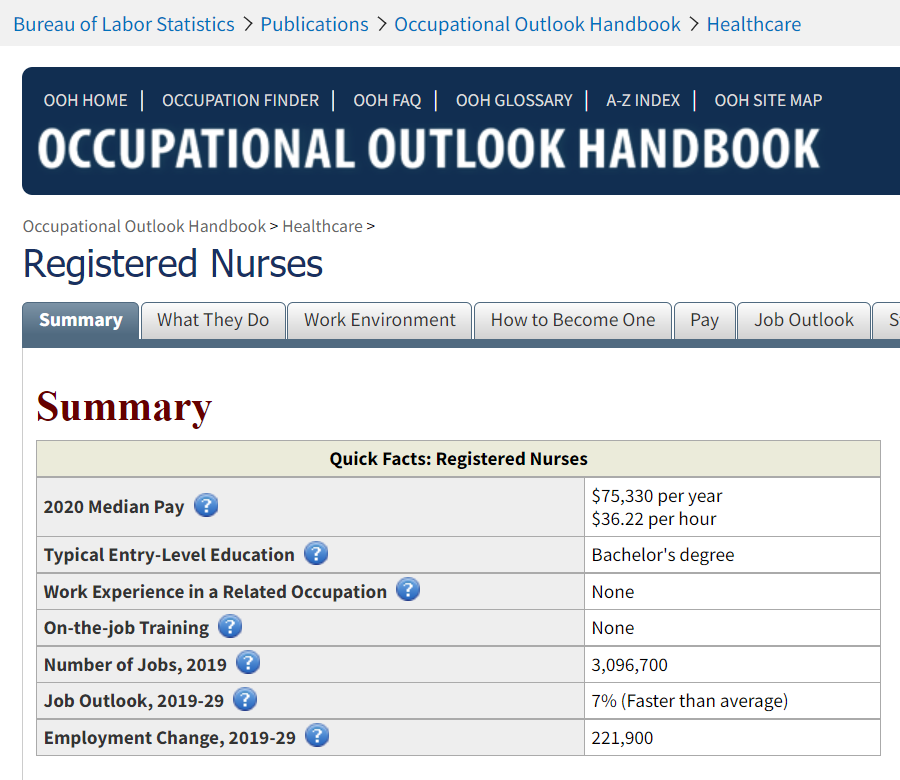The United States is in the midst of a critical nursing shortage that is expected to continue after 2030.
In a series of posts, I will examine how this complex problem arose, what the statistics reveal, and what strategies healthcare organizations can use to meet the challenges of the nursing shortage.
What’s going on?
Since the 1900s, the US They experience nursing shortages periodically. The most important factors that led to shortages were: economic recessions, world wars and working conditions. But the current shortage that started around 2012 is greater than ever!
The demand for new registered nurses (RNs) is projected to increase to 1.2 million by 2030. Despite significant challenges, foreign nursing schools and recruitment programs are working to meet the growing demand for qualified nurses.
According to “the jobs that are most in demand right now” as of February 2021, Registered Nurses in demand is a TOP 5 job in the US. With the highest demand in general.
Healthcare is expanding and facilities are facing increased patient demand; The US population over retirement age is growing rapidly, from 41 million in 2011 to more than 70 million in 2019 (an increase of 73%) and is expected to be close to 75 million by 2030.
Retirement is also generating a flight of nursing staff. Between 2000 and 2018, the average age of registered nurses increased from 43 to 48, and now nearly half (48%) of all registered nurses are over the age of 50. As they retire, their invaluable accumulated knowledge and experience retires too!
…And COVID-19 created a wave of artificial early retirements due to the extended period of limited access for both patients and staff. Many hospitals forced their employees to lay off work, leading some RNs to opt for early retirement, who otherwise would not have planned to do so!

